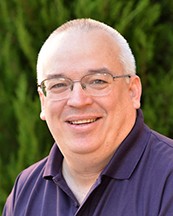Chamber chief has growth plan for Santa Maria
IN THIS ARTICLE
- Central Coast Topic
- Erika Martin Author
By Erika Martin Friday, October 17th, 2014

Santa Maria Chamber of Commerce CEO Glenn Morris.
For most, just filling the big shoes left vacant earlier this year by the retirement of legendary Santa Maria Chamber of Commerce leader Robert Hatch would already be a full-time job.
Glenn Morris, who stepped into the position this June, also inherits the steep climb officials have faced in galvanizing industry in the city, whose economic vitals continue to lag behind national and regional averages.
Before coming to the Central Coast, Morris, 47, was most recently in Visalia, where he worked in tourism and economic development organizations for seven years before serving another five years as chamber president and CEO. The move to Santa Maria will allow him to bring the functions of commerce, tourism and economic development under one roof.
Morris, who also previously led a chamber in Washington state, said he was attracted to Santa Maria due to the community’s “strong tradition of agriculture and values of hard work and self-reliance,” which is “very similar to where [my family] came from in the Central Valley.”
Michael Cox, director of membership and sales at the Visalia chamber, described Morris as an energetic and focused organizer who worked tirelessly to build a collaborative business environment.
Cox said Morris’ tenure at the Visalia chamber was marked by ardent promotion of business interests in local government.
“He was not afraid to go to city council or Board of Supervisors meetings and oppose issues that affected business in the wrong way,” Cox said. “But he was also good at going to those meetings and thanking them for heading them in the right direction for business.”
Cox is a Central Coast native who graduated from San Luis Obispo High and raised his sons in Atascadero. “From growing up over there and knowing the people, I feel Glenn’s a great fit for the Santa Maria chamber,” he said.
In an address on Santa Maria’s economic outlook at Coastal Business Finance’s annual luncheon, Morris highlighted some positive economic indicators. Sales tax revenue in the city was up more than 5 percent in the first quarter, beating the state average, and the transient occupancy tax jumped 12 percent over the last fiscal year, giving the city’s tourism industry a shot of encouragement.
Development is also on the up in Santa Maria, Morris said, and he hopes to build on the strength of the city’s industrial core and jobs in manufacturing, agriculture and energy. He pointed to large commercial projects such as the recently opened Lineage Logistics cold storage facility and expansion of Windset Farms’ greenhouses as proof “that investment is beginning to happen and we’re not just trying to protect the corn anymore.”
Morris also hopes to play to existing strengths in the aerospace industry as plans for the Santa Maria Airport Business Park inch closer to approval. “That’s a very unique opportunity that doesn’t exist in many places in the state of California, where you have an airport with a full-sized runway and industrial business space right across the fence,” he said.
Santa Maria’s poverty rate, however, remains disproportionately high. In 2013, the U.S. Census Bureau placed the city’s rate at 23.5 percent, compared to a national average of 15 percent. “Unemployment is improving but it’s still not at a number that makes any sense,” he said. “We continue to have numbers that exceed the county and the region and the state, and that’s something we have to continue to work on.”
Lower incomes mean residents wield less discretionary spending power, in turn crippling retail. Meanwhile, lower rates of educational attainment compared to surrounding cities make it harder for Santa Maria to bring in high-paying jobs. “The challenges that we have here probably stem as much from our demographics as they do from anything specific to business,” Morris said.
Morris envisions the chamber working as an umbrella for existing services offered by scattered development programs along with new initiatives, such as a possible university extension center, to “get them working as a cooperative so that to a small-business person it looks seamless.” He pointed to the example of College of the Canyons in Santa Clarita, which increased access to education with an on-campus center built to house other regional university’s extension programs.
Morris also hopes to build channels that link up job seekers with area employers and plans to promote what he calls “self-help economic development” — growth that stems organically from burgeoning networks built across community groups and governmental organizations.
“As the economy begins to warm up, we just need to double-down on our efforts to sell the community to new businesses and work on that marketing of the community piece,” Morris said. “I think we have an opportunity to present ourselves as the best-value coastal community our there.”
Related Articles
 Friday, September 16th, 2022
Friday, September 16th, 2022
Medical school trains the next generation of physician assistants in Santa Maria
 Friday, September 9th, 2022
Friday, September 9th, 2022










